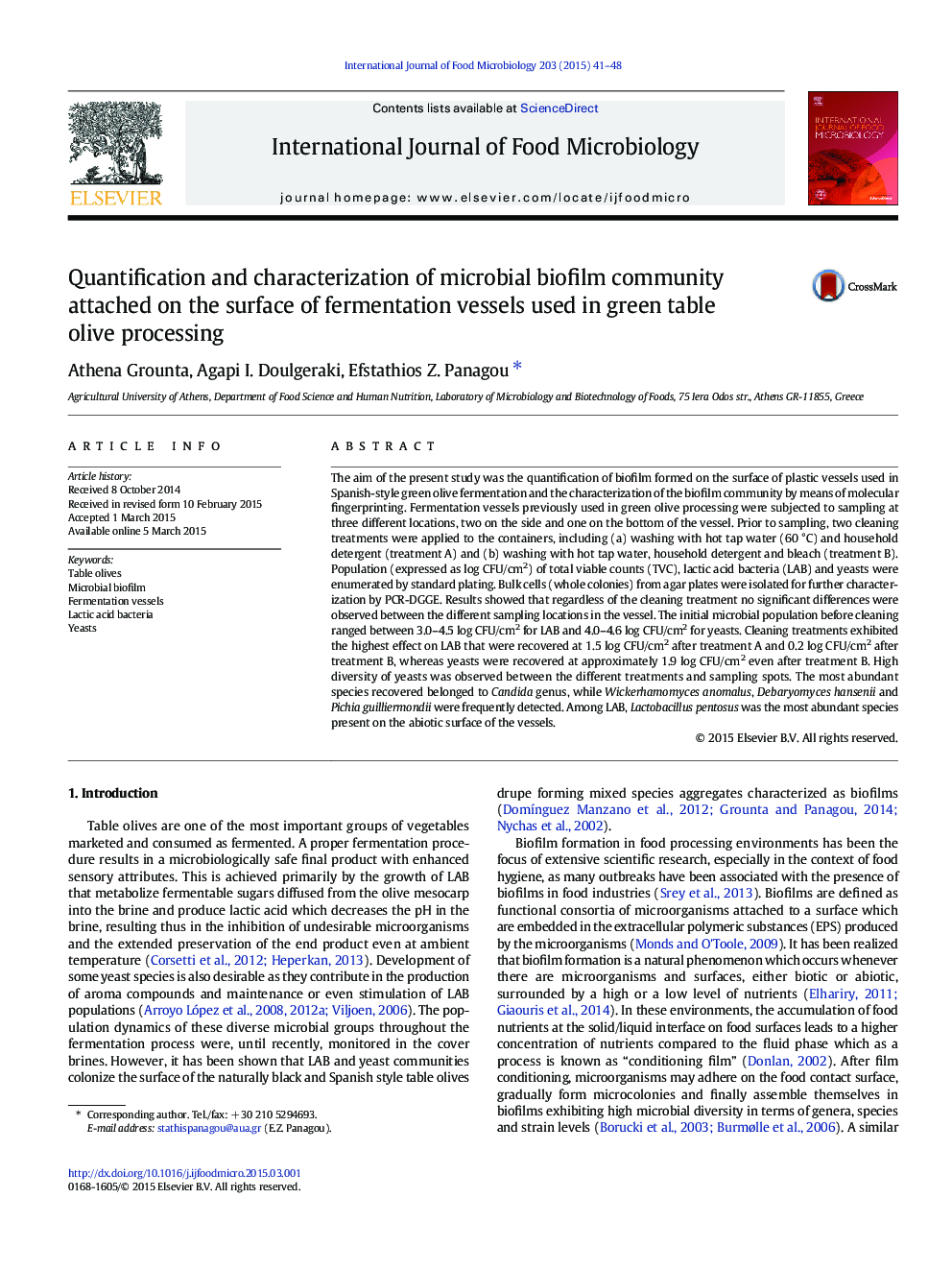| کد مقاله | کد نشریه | سال انتشار | مقاله انگلیسی | نسخه تمام متن |
|---|---|---|---|---|
| 4366613 | 1616580 | 2015 | 8 صفحه PDF | دانلود رایگان |
• The biofilm on the surface of table olive fermentation vessels was investigated.
• Vessels were cleaned before sampling with hot water, detergent and/or bleach.
• A biofilm of LAB and yeasts was detected on the surface of the vessels.
• Among LAB, L. pentosus was the most abundant species recovered.
• High diversity of yeasts was observed with Candida spp., W. anomalus, P. guilliermondii, and D. hansenii.
The aim of the present study was the quantification of biofilm formed on the surface of plastic vessels used in Spanish-style green olive fermentation and the characterization of the biofilm community by means of molecular fingerprinting. Fermentation vessels previously used in green olive processing were subjected to sampling at three different locations, two on the side and one on the bottom of the vessel. Prior to sampling, two cleaning treatments were applied to the containers, including (a) washing with hot tap water (60 °C) and household detergent (treatment A) and (b) washing with hot tap water, household detergent and bleach (treatment B). Population (expressed as log CFU/cm2) of total viable counts (TVC), lactic acid bacteria (LAB) and yeasts were enumerated by standard plating. Bulk cells (whole colonies) from agar plates were isolated for further characterization by PCR-DGGE. Results showed that regardless of the cleaning treatment no significant differences were observed between the different sampling locations in the vessel. The initial microbial population before cleaning ranged between 3.0–4.5 log CFU/cm2 for LAB and 4.0–4.6 log CFU/cm2 for yeasts. Cleaning treatments exhibited the highest effect on LAB that were recovered at 1.5 log CFU/cm2 after treatment A and 0.2 log CFU/cm2 after treatment B, whereas yeasts were recovered at approximately 1.9 log CFU/cm2 even after treatment B. High diversity of yeasts was observed between the different treatments and sampling spots. The most abundant species recovered belonged to Candida genus, while Wickerhamomyces anomalus, Debaryomyces hansenii and Pichia guilliermondii were frequently detected. Among LAB, Lactobacillus pentosus was the most abundant species present on the abiotic surface of the vessels.
Journal: International Journal of Food Microbiology - Volume 203, 16 June 2015, Pages 41–48
